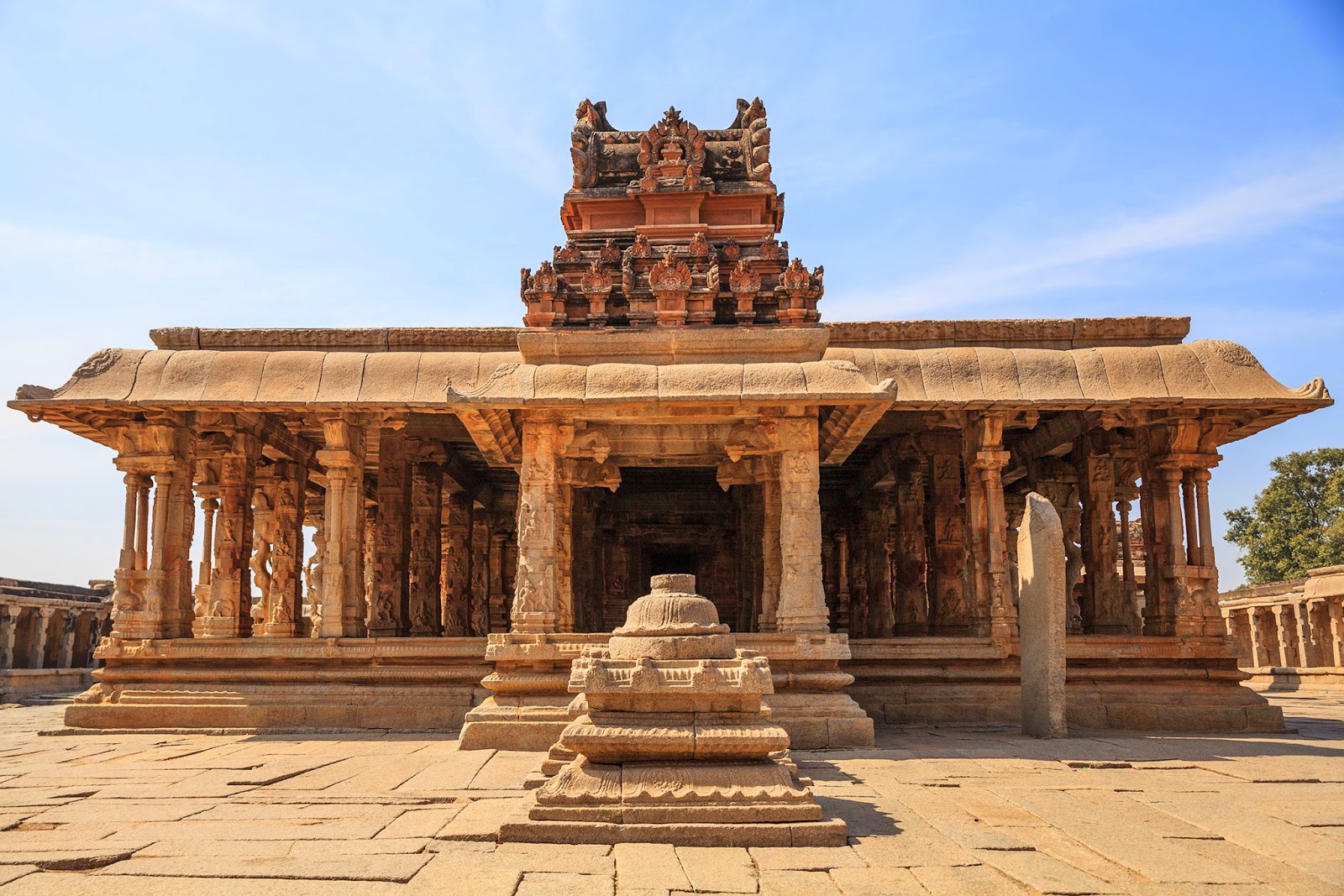 |
| From the base of Matanga hill looking towards temple |
Next time I will book more trains, and when I travel by bus I will try to keep the trips shorter. The longest leg was between Cochin, Kerala and Chaudi, Goa and dragged on for 20 hours. It was grueling but I have a much better feel for the size and shape of the country now and I was able to see at least some of it out the window. Most of the travel was at night, however, and it can be nerve wracking driving over mountain roads when you can’t see anything. I will also avoid sleeper buses as their compartments are too short for me and I felt claustrophobic. The better choice, for me at any rate, is the AC half sleeper – meaning it’s air conditioned and you get a reclining seat with a simultaneously raised leg rest – it’s actually quite comfortable and being upright and facing forward makes the harrying drive through chaotic traffic and steep mountain roads more bearable.
 |
| An art student studies classic work |
Saturday I woke up early and went for a ten km. run in the farmland behind DSK Campus along the old canal road. There is a stone bridge with a 19th century date engraved in the keystone. A massive excavation about a kilometer behind the gates marks the beginning of construction of DSK's Dream City complex living and recreation center. Service roads with street lamps have been built where the future streets will be but the surroundings are still cultivated farm land. Traffic to the building site includes dump trucks, concrete mixers and security jeeps. Sometimes a bullock cart driven by two older men creaks by and we stare at each other before waving and smiling. More modern transport is two wheeled, usually two or three persons on a 100cc Hero motorcycle.
 |
| Dawn on Matanga hill, Hampi |
farm house with the intention of having tea if the man of the house was in. He was in the fields so I just said hi to the women and children and carried on. A boy and a girl kept waving and saying 'bye!' each time I would wave back until I finally disappeared around the corner of the road.
 |
| Matanga hill, Hampi |
The other wild population here are the dogs.
 |
| What to do in a ruin? |
 |
| Many school classes visit Hampi |
 At the bus depot I had a tasty masala dosa for dinner and caught the overnight sleeper bus to Hospet, the transport hub near the ancient ruined city of Hampi. I didn’t sleep well in the bus at all. The road was rough and mountainous and I would much rather travel in daylight in the future.
At the bus depot I had a tasty masala dosa for dinner and caught the overnight sleeper bus to Hospet, the transport hub near the ancient ruined city of Hampi. I didn’t sleep well in the bus at all. The road was rough and mountainous and I would much rather travel in daylight in the future.Arriving rather rumpled in Hospet I grumpily marched past the auto rickshaw drivers offering to take me to Hampi for 500 hundred Rupees and hopped on a city bus which took me there for 15 IDR. My first impression of Hampi was that it was visually stunning and that the complex was massive. After three days exploring the grounds on foot that impression has been confirmed.
On my final day in Hampi I woke up at 5 to climb Matanga hill to watch the sunrise, well worth the trek through the darkness. I took the old route to the top, where the stone path leads up over huge boulders. As it nears the top the path is exposed, with one face looming above you and the other dropping away, leading up around a corner out of sight, and the surface, while providing good grip has been worn smooth and slants downward. Despite enjoying rock climbing, without the security of equipment I have to battle my nerves before moving on.
 |
The view is worth it. From above you can see much of the ruins and get a better idea of how it was laid out as well as the vast scale. The incredible red boulder landscape and the green river valley combine to dramatic effect. Stark contours create contrast when lit by the rising sun and rural life far on the river banks and on the farms gently awake far beneath us. It is clear why a temple was built on this hill top - it invites meditation with its' isolation and unobstructed view in all directions of the countryside below.
 |
| One of several bathing tanks |
Next stop Kerala.








1 comments on "AC half sleeper to Hampi"
More than 5 feet long and 4" thick?!?!?!? Now you tell me - YIKES!!!
Post a Comment